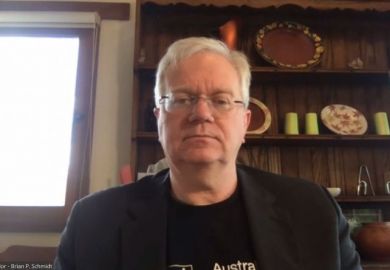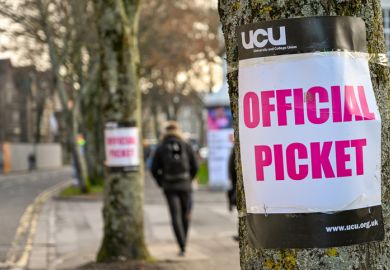The University of Tasmania will ask its staff to forgo this year’s 2 per cent pay rise in a bid to save an estimated 50 jobs, as more Australian institutions adapt their spending to depleted post-pandemic budgets.
UTas said union leaders had endorsed its savings plans, which would “address non-people costs first” and “retain choice to the greatest extent possible”.
Vice-chancellor Rufus Black vowed to seek voluntary redundancies before forced separations and to give internal applicants preference for jobs. He outlined plans to borrow A$130 million (£72 million) over four years “so that costs are shared between current and future generations”.
“This is a once in 100-year event”, and the loan will enable UTas “to not just cut our way out of this but to see the burden shared across time”, he said.
Professor Black said the university needed to reduce its salary bill by between A$40 million and A$50 million a year to address a coronavirus-induced shortfall of around A$34 million in 2020, and between A$60 million and A$120 million for each of the next three years.
By then the university’s debts would exceed its investments by some A$80 million, overturning the “slightly positive” net position at present.
“It will very much depend on how border restrictions work,” he said. “If…international students were able to come into the country under careful health and quarantine procedures, that would be a very different outcome to one where they can’t come at all. We’re not doing crude cutting because we need to allow for [that] possibility.”
Universities Australia has modelled the pandemic’s budgetary impact on the sector at between A$3.1 billion and A$4.8 billion this year, and up to A$16 billion by 2023. Chief executive Catriona Jackson said the losses could jeopardise up to A$3.5 billion of annual university research.
“If universities are unable to continue funding this activity, Australia’s ability to innovate its way out of the Covid-19 recession will be severely hampered,” she warned.
UTas has agreed to give an independent national committee oversight of its job cuts over the next year, effectively adopting the “national jobs protection framework” that was negotiated by union and university leaders only to be rejected by about 20 institutions.
Some of the proposals require changes to the university’s enterprise agreement. They will be put to a vote by UTas members of the National Tertiary Education Union, ahead of consideration by all staff.
La Trobe University is seeking similar changes and has scheduled votes for 15 and 16 June. Vice-chancellor John Dewar repudiated a newspaper report that La Trobe was “at risk of going broke”, but said adoption of the framework could save the equivalent of 225 jobs in 2020 and 2021.
Southern Cross University has proposed cancelling two annual pay rises and inviting staff to cut working hours, as it scrambles to save up to A$58 million over the next two years.
“I cannot sugar-coat this,” vice-chancellor Adam Shoemaker told staff. “There is no option of a return to what used to be thought of as the ‘status quo’. That ship has sailed permanently.”
Swinburne University has opened consultations on voluntary redundancies as it confronts a A$51 million deficit in 2020 and A$101 million for each of the next two years. “We have done all that we can to cut costs,” said vice-chancellor Linda Kristjanson.
Register to continue
Why register?
- Registration is free and only takes a moment
- Once registered, you can read 3 articles a month
- Sign up for our newsletter
Subscribe
Or subscribe for unlimited access to:
- Unlimited access to news, views, insights & reviews
- Digital editions
- Digital access to THE’s university and college rankings analysis
Already registered or a current subscriber?









